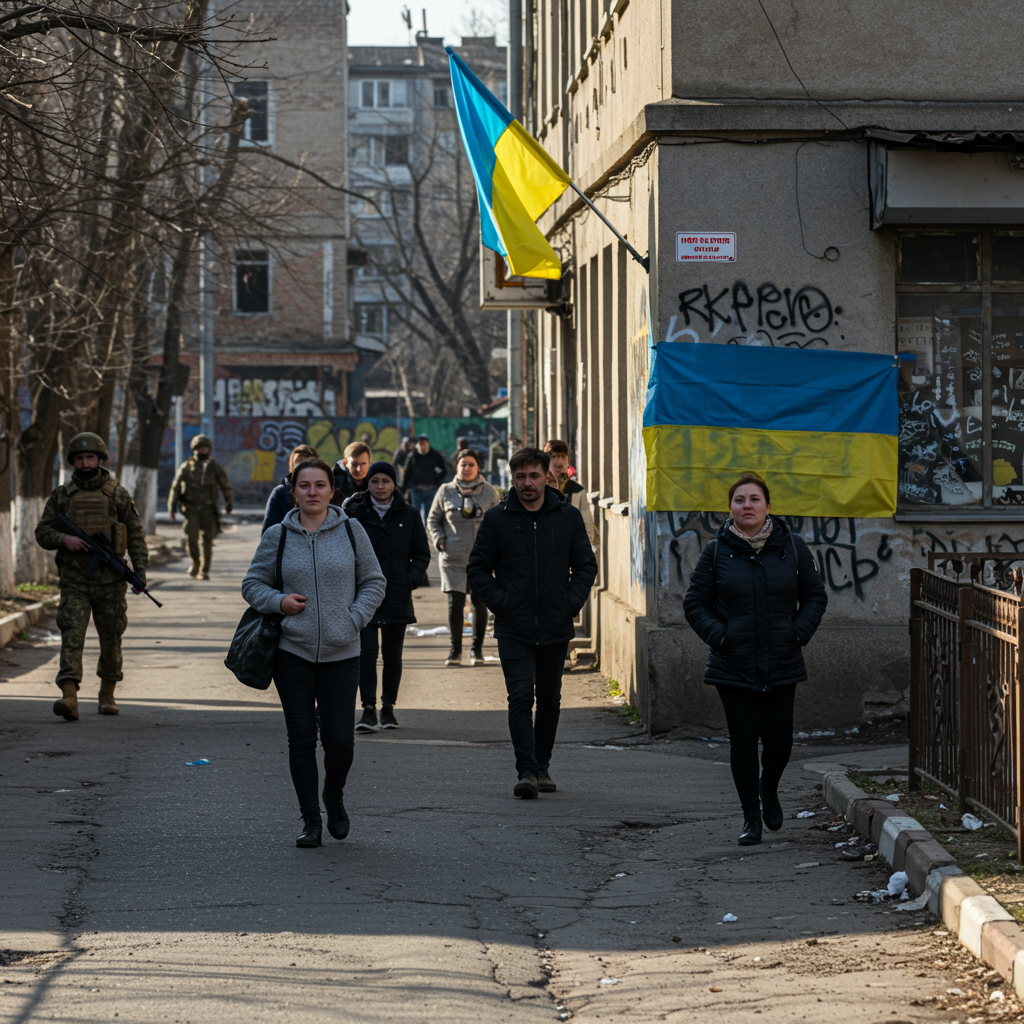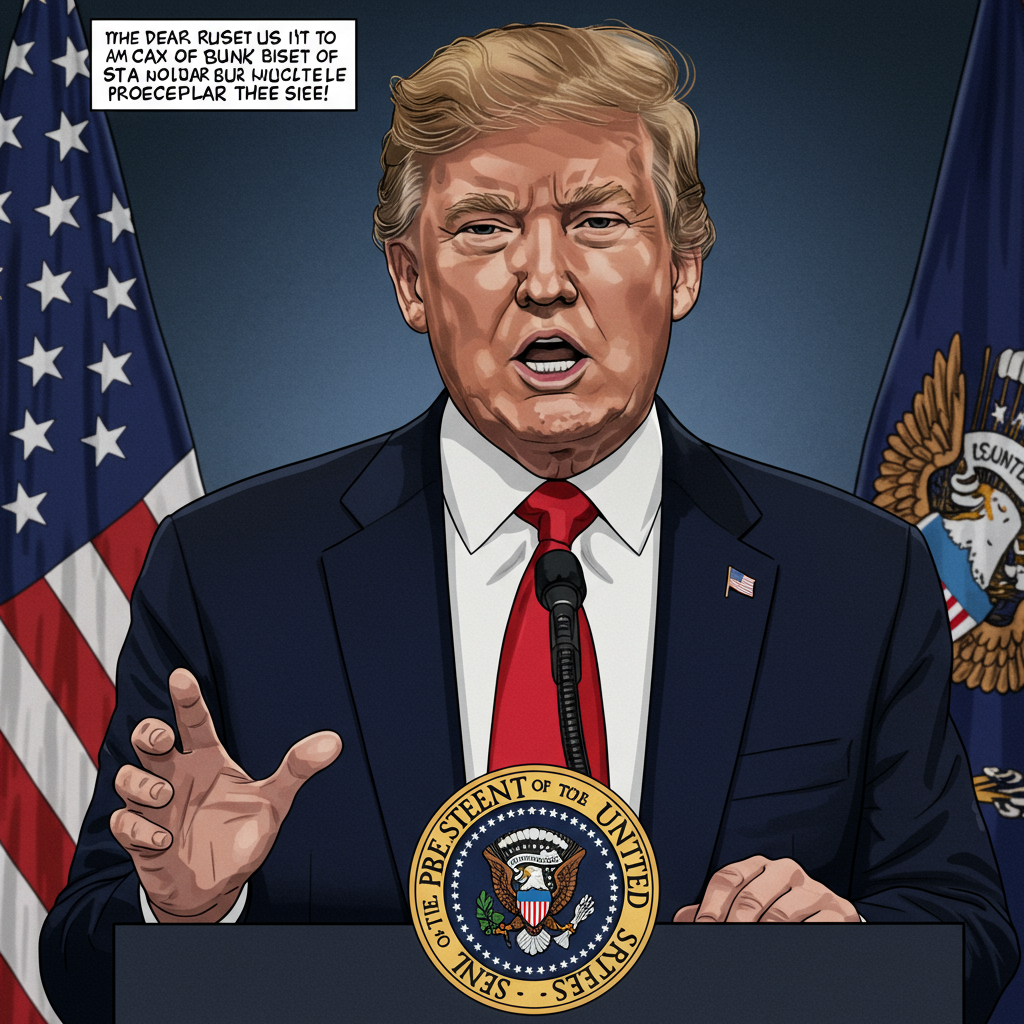A significant portion of Ukraine – estimated at one-fifth of its territory – remains under Russian control. For the Ukrainians who live in these occupied areas, daily life is a tense reality defined by pressure to conform, pervasive fear, and quiet, often dangerous, acts of resistance. Many residents fear that any future peace agreement may not lead to their liberation, potentially cementing their fate under Moscow’s rule.
Drawing on accounts from individuals across different occupied regions – from areas seized in the 2022 invasion like Melitopol and Mariupol, to Crimea annexed in 2014 – a clear picture emerges of life under the boot. To protect their safety, those sharing their stories often use pseudonyms, highlighting the inherent risks involved in speaking out.
Living Under the Imposed Order
Life under occupation is marked by systemic policies designed to erase Ukrainian identity and impose Russian rule. A strict policy of “Russification” is being aggressively implemented. This includes:
Forced Citizenship: Obtaining a Russian passport is increasingly becoming mandatory for accessing essential services like work, education, or urgent medical care.
Suppression of Identity: Public display of Ukrainian symbols or language is banned. In Crimea, where occupation is long-standing, simply speaking Ukrainian in public can attract unwanted attention from authorities or pro-Russian neighbours.
- Militarization of Daily Life: This is particularly evident in education. In cities like Melitopol and across Crimea, schools are being militarized. Children are reportedly made to sing the Russian anthem daily, even in nursery schools. Evidence includes school notebooks featuring Vladimir Putin’s portrait, billboards promoting conscription, and accounts of students wearing Russian military uniforms and participating in military training exercises. Teachers are often Russians who have moved into the occupied territories.
- https://www.bbc.com/news/articles/czj40rn8k0wo
- https://www.bbc.co.uk/news/articles/czj40rn8k0wo
- https://english.elpais.com/international/2023-02-22/the-silent-heroes-of-khersons-resistance-they-thought-we-would-hide-and-cower-in-fear.html
- https://www.journalofdemocracy.org/articles/what-putin-fears-most/
For residents who chose to stay, often because it is their lifelong home or to care for elderly relatives, witnessing this systematic dismantling of Ukrainian identity is deeply distressing. As one resident, Mavka in Melitopol, explained, staying felt like the only response to the injustice of someone taking her home.
A Climate of Fear and Control
Fear is a constant companion. The presence of Russian security services (FSB) looms large. Even seemingly minor acts of defiance can lead to severe repercussions. Refusing to conform, such as a child not singing the Russian anthem at school, can reportedly result in FSB visits to parents’ homes, marking families for potential future action.
The threat of harassment and arbitrary detention is real. Residents speak of fearing soldiers in public or being falsely accused by informants. The chilling fear of “silent disappearance” – being detained without trace – is a significant concern. The tragic case of journalist Viktoriia Roshchyna, who disappeared while investigating torture allegations in eastern Ukraine and later died in Russian custody with signs of torture, underscores this stark reality. Civilian resisters in occupied territories face documented risks of arbitrary arrest and torture, mirroring experiences in previously occupied cities like Kherson, where ordinary citizens involved in resistance were subjected to brutal interrogations.
Adding to the hardship, cities heavily damaged by conflict, like Mariupol, face immense economic challenges. Destruction and demolition are widespread, leading to soaring costs of living and unemployment. Property issues dominate conversations, with residents consumed by how to reclaim or sell their damaged or destroyed homes.
The Silent Frontline: Acts of Resistance
Despite the overwhelming pressures and dangers, acts of resistance persist. Often small and silent, these defiant gestures aim to remind residents that they are not alone and to reject the legitimacy of the occupation.
One example is the secret female resistance network known as Zla Mavka (“Angry Mavka”), reportedly active across many occupied cities. This network uses social media to document life under occupation, counter Russian propaganda, and organize acts of defiance. These can include placing Ukrainian symbols or leaflets – sometimes featuring quotes from national figures like Taras Shevchenko – in public spaces. These actions, while seemingly small, require immense bravery and help to counter the feeling of isolation among pro-Ukrainian residents. Some accounts also mention more perilous activities, such as allegedly tampering with food or drink intended for Russian soldiers, though the verification of such acts and the potential severe punishment underscore the extreme risks involved.
The core purpose of this silent resistance is to demonstrate the enduring presence and spirit of the pro-Ukrainian population, even when overt opposition is impossible. As Mavka stated, they cannot fight with weapons now, but they want to show “that pro-Ukrainian population is here, and it will also be here.” Civilian resistance, including crucial intelligence gathering, has proven vital in helping Ukrainian forces elsewhere, as seen during the liberation of Kherson.
An Uncertain Future
Perspectives on the future vary among those living under occupation. Some, like Mavka, fear that peace agreements might solidify Russian control long-term, leading to further eradication of Ukrainian identity and demographic changes as Russians move into the territories. They worry that if Kyiv agrees to a ceasefire under certain conditions, it might mirror the lasting changes seen in Crimea since 2014.
Others prioritize an end to the conflict, acknowledging the immense human cost. Pavlo in Mariupol, having survived severe injury, believes the war must end, even if it means his inability to return to a free Ukraine. However, he recognizes the complex ethical dilemma and the potential feeling of betrayal for those who have suffered and lost loved ones.
The deeper reason behind Russia’s relentless push to control and Russify these territories goes beyond NATO expansion, as some analysts suggest. The existence of a successful, sovereign democracy in Ukraine is seen by Moscow as a fundamental threat to its own autocratic model, providing an alternative vision that could resonate within Russia itself. The occupation and suppression of Ukrainian identity are thus tools to crush this democratic aspiration and maintain control over a perceived sphere of influence.
Amidst this uncertainty, the human toll continues. Residents grapple with the daily grind of hardship and fear. The impact on the younger generation is particularly heartbreaking, with children growing up in an environment saturated with militarism and violence, taught to fight rather than build peace.
Despite the grim realities, the resilience and quiet determination of Ukrainians under occupation remain. They continue to find ways to resist, hold onto their identity, and hope for a future where their homes are once again free.




